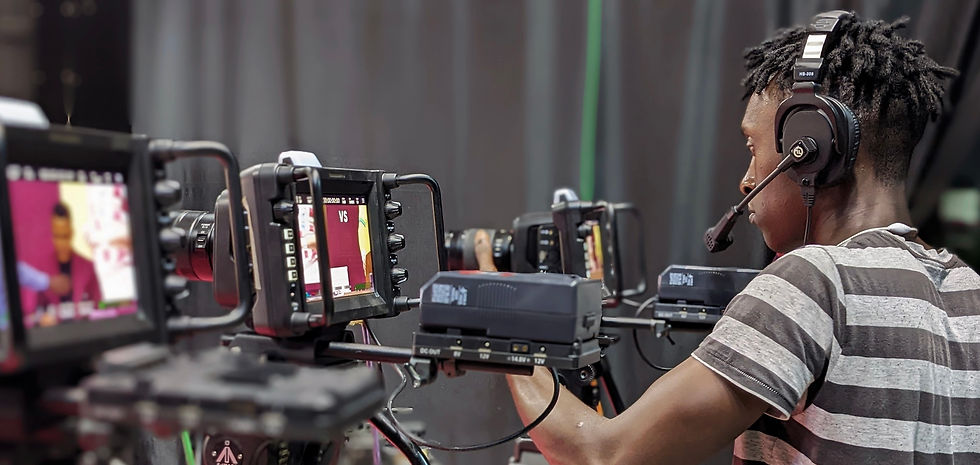Creating a Shot List: Why Teen Filmmakers Should Plan Every Frame
- BazAct

- Sep 3
- 2 min read
One of the easiest ways for young filmmakers to level up their work is by making a shot list before filming. It might sound technical, but a shot list is really just a written plan of how you’ll film each part of your story. For teens working on short films, school projects, or even their first movie acting class in Dubai, learning how to plan shots can transform the process.
Here’s how—and why—it matters.
What Is a Shot List?
A shot list is a document that outlines every shot you plan to film, usually in the order you’ll shoot them. It often includes details like:
• Shot type (wide shot, close-up, over-the-shoulder, etc.)
• Camera movement (if any)
• Who or what is in the shot
• Location and time of day
• Notes on lighting or dialogue
You don’t need fancy software—a simple spreadsheet or notebook works just fine.
Why Teen Filmmakers Should Bother With One
When you’re excited to start filming, planning might feel like it slows you down. But the truth is: a good shot list saves time, avoids mistakes, and keeps the whole crew focused—especially when working with a small team of friends or classmates.
In a student production, you often have limited time, gear, and locations. A shot list makes sure you use all of them wisely.
Shot Lists Make Directing Easier
A shot list acts like a map. When you’re on set (even if it’s just your friend’s living room), you’ll know exactly what comes next. You won’t waste time guessing where to put the camera or how to shoot a line of dialogue. This is especially useful in screen acting classes or student film competitions, where time and preparation matter.
Better Teamwork
If you’re working with a group—maybe a friend doing sound and another filming—your shot list helps everyone know what’s coming. It also shows you’re taking the project seriously, which encourages others to do the same.
In drama class or film acting class settings, a detailed shot list also helps you communicate better with actors, lighting help, or anyone on your small crew.
Planning Helps with Storytelling
Film is a visual medium. Your shot choices should support the story. A tight close-up during a sad moment. A wide shot to show a character’s isolation. These are not just technical choices—they’re storytelling tools.
By thinking about your shots ahead of time, you begin to think like a real director or cinematographer.
Practice = Progress
Like anything else in filmmaking, shot listing gets easier with practice. Try making one for a scene from your favorite movie, or for your next student film project. Don’t worry if your early lists aren’t perfect—they’re a tool for thinking, not a rulebook.
Final Thought
Creating a shot list teaches teen filmmakers to plan, visualize, and think critically—skills that will help in every future screen acting class, film acting course, or short film project.
You don’t need expensive gear to make a great film. But you do need a clear plan. Start with a shot list, and you’ll already be ahead.






Comments